|
The gaming totals for June '22 are below. Played slightly more games in June compared to May but lightly less first plays! Total games: 48 Different games: 36 First plays: 9 Wednesday 1st Simon's
Forgotten Waters - 5 Thursday 2nd on Board Game Arena Loco Momo - 8 Fruit Picking - 2 Splendor - 18 Azul - 4 Sushi Go! - 13 Lucky Numbers - 24 Friday 3rd Simon's Arcadia Quest - First Play! Sunday 5th on Board Game Arena Fruit Picking - 3 Stella - Dixit Universe - 8 Carcassonne - 8 Space Base - 12 Railroad Ink - 28 Lucky Numbers - 25 Tuesday 7th at The Sovereigns with the Woking Gaming Club Merv - 2 Thursday 9th Aldershot Isle of Cats - First Play! Chariot Race - First Play! Sunday 12th on Board Game Arena Jump Drive - 7 Fruit Picking - 4 Barenpark - First Play! Martian Dice - 14 Lucky Numbers - 26 Tuesday 14th at The Sovereigns with the Woking Gaming Club Hidden Leaders - First Play! For Sale - 8 Deep Sea Adventure - 7 Thursday 16th Aldershot Love Letter - 57 Machi Koro 2 - 3 Sunday 19th on Board Game Arena Barenpark - 2 Dice Forge - 10 Jump Drive - 8 Cloud City - 13 Loco Momo - 9 Lucky Numbers - 27 Tuesday 21st at The Sovereigns with the Woking Gaming Club Terminator: Dark Fate The Card Game - First Play! Port Royal - 21 Thursday 23rd Aldershot Welcome To - First Play! Port Royal - 22 Village Green - First Play! Saturday 25th on Board Game Arena Fluxx - 4 Race for the Galaxy - 14 Martian Dice - 15 Sunday 26th on Board Game Arena Hanabi - 2 Can't Stop Express - 3 Via Magica - 10 Azul - 5 Railroad Ink - 29 Thursday 30th Aldershot Burger Boss - First Play! Tiny Epic Galaxies - 7
0 Comments
30th June 2022 It's a Thursday and we're at Aldershot for some gaming goodness. Burger Boss! What's better than being a king? Being a boss of course! Be a boss of those burgers in this game of resource management and worker placement or if you want to be specific; dice-placement. What's in game?
All the game's cards are finished in vinyl/plastic and as such feel quite sturdy. The dice plastic, although they have nicely rounded corners. Wooden components are always a plus in my book. The discs used to represent burgers and ingredients are obviously wrongly proportioned but if they were correctly sized, they'd have to be much bigger, otherwise they'd make the handling ingredients even more fiddly than it already is - which is quite fiddly and is my one criticism of the components. Presentation wise, Burger Boss uses a cheerfully brash palette along with cartoonish illustrations. It's a bright, colourful art style that suits the game's light-hearted approach perfectly. There's little iconography used in the game and it's easily understood, mostly consisting of symbol ingredients and and dice values. The manager's special cards use text to provide information, which is a little sparse and will probably have players referring to the rules. It's not something that will occur too often though. Packaging I don't usually talk about a game's packaging - because usually it's just a box. Burger Boss however, comes in a giant burger! Inside are several layers to hold all of the game's components. Yes I know that it won't stack with other games and the manual doesn't fit in the burger and it'll just have to be put all back into it's normal, typical box anyway which technically defeats the purpose of the burger packing - but it gives the game a unique, eye-catching presentation and I like that. Yes, I also know it's just a gimmick but I like gimmicks! How's it play? Setup
On to play The objective in Burger Boss is to fulfil customer orders to earn money, this is done by gaining and cooking the required ingredients. All of these actions are achieved by putting dice on cards, many of these cards will require dice of specific values. The game does not have a traditional turn order and instead uses a mechanic that mixes randomness and player choice to determine player order. Once player order is established, whenever someone becomes the active player, they can take an action by using a die. Each round consists of the following phases.
Endgame The endgame is triggered when the customer card deck is depleted - although there will be customer cards in play. There is then 1 final round of playing then the game goes to scoring. Players total money from the following: Money earned from selling food to customers. Money earned from their secret objective card. Anything still on the grill earns $1 apiece; food in storage earns nothing. Cash is tallied, highest amount wins. Overall
Burger Boss is a light-to-midweight game, as written above, the rules seem a bit complex but in practice they're fairly straightforward. That's not say it's a good game for beginners - because it's not! There are several mechanics and concepts in Burger Boss that that require thinking ahead and someone nuanced decisionmaking. Quite often, it'll be impossible to complete a customer's order in a single round and generally there isn't enough cold storage to hold the required ingredients. This means that players will probably have to put ingredients on to their grill and hope to complete them in a later round. Mistake's can be costly and $1 is scant compensation for losing food. Which brings me to customers. There's a balance to be found between completing a customer order as quickly as possible and waiting for a later turn to earn more money but risking another player getting that customer first! While there is no direct interaction between players in Burger Boss, the game has a lot of open information and it definitely pays to watch what other players are doing; what they've got on their grills, where they're putting their workers and responding to this. This ties in with the turn order mechanic, sometimes players will want to use less workers to go earlier. Worker spaces to gain ingredients are limited and turn order can play a vital role when fulfilling customer orders, in both cases, going later and being stymied by other players' actions (Whether accidentally or deliberately.) can be infuriating. Burger Boss also has a a bit of the unexpected, manager's special card can also throw spanners into the works with unexpected special actions, especially when used judiciously. Despite this, the game provides options to gaining other benefits - or benefits other ways, if the baker or butcher is inaccessible for any reason, there's always the supermarket. There's a pretty generous number of worker spaces on the card for the aforementioned manager's cards. All of these means that rarely is a player presented with meaningless decisions which is always a good thing in games. I found Burger Boss to be a colourful, visually appealing game of making burger (OK, they stacks of ingredients, but still it looks good.) and fun worker placement and resource management game with a reasonable play time and gameplay that's tricky enough to tax the brain enough to be engaging, along with a side order (SIC) of competitiveness. 23rd June 2022 It's another Thursday evening and we're in Aldershot for another gaming night. Village Green - a local game for local people? It turns out that competitions between local villages to have the best village green can be serious business! What's in a game?
Well that's it for the components - a deck of cards. The card quality average and what you'd expect from games nowadays. Watercolour styled artwork is used throughout the game on the green and village cards. depicting various items that could be found on an English village green (SIC). It's a pleasant style and the artwork all looks appropriately good, fitting it's theme quite nicely. The iconography is not so well implemented though. I felt the symbols used for the different types of flower could have been a bit more distinct or individual, especially since the icons are quite small. I also felt the 3 different types of tree icon displayed on the bottom of the green cards and award cards could have had been more distinctive. Otherwise, the iconography is fine. How's it play? Set up
On to play The objective in Village Green is to construct a tableau of 3x3 green cards while on the 'outside' of this 3x3 grid create a row and column of award cards to score points off of the green cards. Thus creating an overall 4x4 grid - including the village card which will be in the top-left corner. Village Green uses the usual turn structure of having the active player complete their action then having play progress to the player on their left. The active player can take 1 of the following 2 actions.
Endgame There are 3 criteria which may end the game. If either the green card or award card deck is depleted, or a player has placed 9 green cards, then the end has been triggered. The current is completed and the game goes to scoring. Player score from the following sources: A face-up village card scored 1 VP Each visible pond scores 2 VPs. Award cards score all the (Up to 3.) cards in their respective row/column. Points are tallied, highest score wins. Overall
On a basic level, Village Green is a fair simple game - pick a card and play a card, which makes it straightforward and quick to understand. However, like all good games, it's easy to learn but hard to master and this is definitely the case with this game. What makes Village Green tricky is having to literally think 2 steps ahead. Players will need to pay attention to a green card's type and colour when playing it because it will influence what is played next to it. Not only is positioning important when playing a green card but the order in which they are played will matter too. E.g., putting a green card into the centre of the 3x3 grid means that all 4 orthogonally adjacent cards placed subsequently must match the flower type and colour for that card. If the centre card is played last, then it would have to match all 4 cards already played and that requires planning ahead. Matching 3 types and 3 colours might not seem difficult but remember, players will only have a hand of 3 green cards and a row of 3 cards to draft from. Sure, a player can keep drawing and discarding green cards to hopefully get what they need, but this can catch a player out. Once the deck is gone - it's game over. Additionally, while rinsing through green cards, other players may be completing their 3x3 grids, which is also game over. Ultimately, players will need to commit to taking some risks and play early cards with gaps between them for some wriggle room for placing later cards and also rely on a bit of luck to get what they need. Award cards are also tricky to manage but in a different way. Players start with three, which can be good as it gives each player a initial individual scoring target to aim for. However, as green cards get played and players may be forced to put them in certain positions thanks to type and colour, it may end up that a award card scores less, zero or even worse - negative VPs! Luckily, award cards can be nullified by covering them with other award cards later. This though raises another quandary for players to ponder. The later an award card is played in the game, the harder it will be to place in a way to maximise it's scoring potential. Finally, there's some potential for higher level play by watching what cards other players are putting down, trying to anticipate their actions and denying them what they need. Although, since some of the icons are so small, it can be physically tricky looking at other players' tableaus with leaning over them! All of these mechanics are good because they always provide players with meaningful decisions as they try and positions cards so that they match type and colour as well as scoring criteria. Having written all of that brings me to a drawback of the game, which is that it can be a harsh and unforgiving experience. Players will be frustrated when unable to play cards and are instead forced to discard. It's likely that some players will end up without all their possible green or award cards - I know I did on my first play. So despite being easy to learn, I'm not sure this is a game for more 'casual players'? If it 'groks' with them, they'll be fine. Otherwise it'll probably take a game or two to get handle on where to player cards. There's not denying it's a elegant, fairly engaging game. It plays quick enough and will provide players the challenge of being able to place all their cards and also optimise scoring opportunities. Definitely worth a try in my opinion. 23rd June 2022 It's a Thursday evening and we're in Aldershot for some gaming goodness! Welcome to the jungle, we got fun and games We got everything you want, honey, we know the names We are the people that can find whatever you may need If you got the money, honey, we got your disease OK, Welcome To... isn't a game about Guns N' Roses or in fact jungles. It's full name is 'Welcome to... your perfect home' and it's about suburban planning - and that's just as equally as glamorous! What's in a game?
The player sheets come in a pad of 100 pages and thus are used up over games, although they will probably last a long time. Now, this is only a personal gripe of mine but I'd rather have a handful of dry erase sheets instead. There's something unsettling about having your game slowly but inevitably eroded. Would dry erase sheets cost so much more? The cards are the average quality you'd expect from a modern game. Finally, I will add that the game does not come with any pencils or pens which feels a bit like an omission to me The game has a subtle 50's Americana aesthetic to it's art direction, since there isn't a great variety of art used throughout the game, it's not immediately apparent (Other than on the cover!). Artwork on the construction cards are essentially a variation on a theme. Having said that, the art that is used is attractive enough and looks good to me. The game uses iconography for its 6 effects and also to convey information on the city plan cards. None of it is hard to learn and won't pose an obstacle. How's it play? Setup
On to play In Welcome To... players are attempting to create the best neighbourhood with their urban planning skills by creating houses and housing estates. Welcome To.. does not use a traditional turn order, since players do not influence each other, all players' actions are resolved simultaneously. In each turn, the following actions are performed.
Endgame There 3 criteria by which the game can end.
There are a large number of scoring methods in Welcome To... and may come from: generally, the first un-crossed off value is the score for that particular tracker.
Points are tallied, highest score wins. Overall
Welcome To... is a fairly easy to learn game that has a brisk playtime that does not outstay it's welcome (SIC), having said that though, it can end very quickly if the wrong numbers come up at the wrong time! The game provides players some meaningful, interesting decisions to make, this is because there are '2' axis of decision making at work here - house numbers and effects. If the game only utilised house numbers, then it would be too straightforward but by pairing them with effects, it provides intriguing propositions. Players will frequently find themselves in situations where they will want to use a certain effect but don't want the associated house number or possibly, having to think about choosing an effect that won't benefit them in order to a house number they want. Players will need to adapt and make use of what they're given to work with, find ways to exploit the effects they've had to use and make them work. In the case of house numbers, quite often this will mean taking house numbers that are not immediately useful and putting them into one of the streets. This can present various problems for players. Leaving too small a numerical gap between houses can be risky because only specific numbers can go there. E.g., having a 7, then a gap, then a 9 means only a 8 will fit in the gap later on. Conversely, leaving too big a gap will mean wasting numbers. Having a 7, then a gap and then a 12 means that most of the numbers in the 8-11 range will be locked out and cannot be used elsewhere in that street anymore. This is the classic dilemma players face in a lot of roll and write style games: Having to try and plan ahead, hoping what you need will come up at some point later on the game. It's essentially a bit of gamble. In this regard, it's something Welcome Too.. does very well and is a solid entry in the roll and write (Or flip and write if you really want to be pedantic.) genre. It means that if this style of game is not your thing, you probably won't like Welcome To.. but if roll and write games are you thing, Welcome To... is definitely worth a try. 21st June 2022 Tuesday is here and we're at The Sovereigns with the Woking Board Gaming Club. Terminator: Dark Fate The Card Game is a cooperative deck-builder based on the film of the same name. In this game, players try to avoid or engage a pursuing terminator in a battle... to the death! First apologies in advance; this is a card game about Arnie and terminators, therefore must have the requisite Arnie quotes. Does this game make you want to 'come with me if you want to play?' 'I'll be back?' No, not likely, more like 'hasta la vista'! What's in a game?
It's a minor quibble but the acrylic tokens used to track damage are a little strange and seem a bit like some generic components cobbled together and sourced elsewhere for the game, I guess the 5 point damage tokens could interpreted as being mangled steel? Not so sure about the red gems though. The cards are a pretty standard quality and what you'd expect from a modern game. In terms of presentation, the game mixes a little original artwork with for the most part photos from the film. I've said this before and I'll say it again, using photos that may well have been taken from a press or promotional pack provided by the distributor always looks cheap. This is no different. The small amount of artwork used is fine and does its job. Most of the game's information is relayed via text, there are only a couple of easily learned icons in the game which won't provide any obstacles. How's it play? Setup
On to play Terminator: Dark Fate follows the typical turn structure for a deck-builder. The active player plays as many cards as they are able to and resolves them, then all cards (Except skill cards.), including un-played cards are discard. The active player then draws 5 new cards. There are 3 phases to each player's turn.
Endgame Play continues until the Rev-9 is destroyed, in which case the players collectively win or until the any of the players are defeated by the Rev-9, in which case they collectively lose. Alternatively, if the wound deck is depleted and a player needs to draw a wound card, the players lose. Overall
There's definitely some things to like about Terminator: Dark Fate. I like that it's a cooperative deck-builder, which is pretty rare. I also like how the game's mechanics captures the theme of being chased - something that occurs throughout the terminator films. A lot of the cards that appear in the game do a good job of reinforcing this. How the terminator lurks in the in the fate deck until it appears and starts causing trouble and how the players can then can damage and push the terminator back into the deck to get some breathing space until it reappears. I like how the Rev-9 hunts, activating hostile cards and also trashing the deck, it adds a natural countdown to the game. Often players will need to make the choice between buying cards and damaging the terminator, it's quite hard to do both. Players will also need to judge if it's beneficial to flee or sometimes rest - getting wound cards out of your hand/deck can be vital Having said all of that, it brings me to a couple of issues with the game. Firstly, is the game's currencies. There are essentially 2 currencies to manage, supply to buy cards and combat to damage the terminator. It felt rare to have what you need in your hand when you need it. There were frequent times that players would have a lot of combat orientated card in their hands but no Rev-9 card to fight as it was somewhere in the deck. - This probably also meant that since they had combat cards, they had little to no supply cards to buy more cards. Conversely, they were times players were sitting there with supply cards and no way of fighting or fleeing the terminator. Secondly and by far my biggest gripe is reserved for the errr, reserve rules: To put bluntly, I feel the reserve is too small. Most deck-builders give players a choice of 10 cards to acquire, in Terminator: Dark Fate players will generally have a choice of 5, this will be worsened by the presence of hostile cards which will further reduce the choices. This can be bad in the early game if expensive cards appear, players may frequently find themselves unable to buy any and just passing or resting. Yes players can choose to add more cards but quite often this felt too risky. Increasing the risk of drawing hostile cards or revealing the terminator if it's not out. I'm not sure there's an easy to fix it though, a bigger reserve would risk more hostile cards appearing, this would be bad in the early game as players would have less ways to manage those cards. Perhaps there needs to be a way of wiping and refilling the reserve? Or having a separate supply of cheap low value cards that are always available to purchase - as found in some other deck-builders. We also found the game a bit harder than we liked. I know that luck always plays a role in any cooperative game but when you get a choice of 4 cards that you can't afford, it feels pretty futile. I think perhaps, in earlier games that we didn't use the flee or rest actions quite enough, but honestly they felt a little counterintuitive; scrubbing all the damage on a Rev-9 to flee didn't seem to sit well with people, neither did resting. It didn't help that the 'easy' starting Rev-9 card forces players to flee if they stagger it, meaning that to destroy it they will need to do a minimum of 11-15 damage in a single turn to defeat it, or to do 5 damage and and then have a card which defeats staggered Rev-9s. The best strategy it seems, is to damage and constantly flee the Rev-9 until enough resources can be gathered to defeat it. It feels appropriate for a terminator game but also perhaps felt like it made the game a little too overlong. The game all felt a little frustrating and futile, especially with frequent turns where players had nothing to do. It's a shame really, because there's the DNA of a good deck-building game somewhere in there that could really do with some balancing. 14th June 2022 It's a Tuesday and we're with the Woking Board Gaming Club at The Sovereigns for some gaming entertainment. I always thought a good leader leads by example and doesn't hide? On the other hand most leaders don't have to contend with 4 feuding factions and the undead! Hidden leaders is a fantasy themed sort of hidden role (Leader!) game with a dash of social deduction. What's in a game?
There aren't too many components to Hidden Leaders but they're all of a good quality as you'd expect from any modern game. The cards are OK, the board is fine and the meeples are of a satisfyingly chunky quality. Art-wise, Hidden Leaders is fantastic, each character is unique and has their own name and illustration, all of which are cartoony, brash and colourful, it's a style that appealing and perfectly fits the game's slightly humorous and not too serious theme. There are icons for the 4 factions which are easily understood as well as a handful of other icons. It doesn't take long to comprehend all of this and it won't prove an obstacle. How's it play?
On to play Hidden leaders is a game primarily about manipulating the 2 meeples on the board because their relative positioning at the game end will determine which faction wins the game and by extension which player wins. This done by recruiting i.e. playing hero cards into your personal playing to create your own band of heroes. There are 4 factions. Black: Undead. Blue: The Water Folk. Green: The Hill Tribe. Red: The Imperial Army. The game uses usual a traditional turn structure with the active player completing their action before play progresses to the player to their left. During the active player's turn, the following must occur.
Endgame The game continues until any player has put 5-8 face-up hero cards into play (Dependant upon player count.), face-down heroes do not count for the purpose of triggering the game end. When this occurs, the current turn is the last turn and we go to declaring a winner. First, the victorious faction must be determined, each one has their own winning criteria based on the positioning of the 2 meeples on the track. Black (Undead.) wins if both meeples are in the black area of the track, that is on spaces 9-12. This is regardless of the positioning of the meeples relative to each other. Blue (Water folk.) win if both meeples are on the same or an adjacent space on the track - provided of course they are both not in the black spaces. Red (Empire.) wins if the red meeple is 2+ spaces further along the track than the green meeple, so long as both meeples are not in the black area. Green (Tribe.) wins conversely, if the green meeples is 2+ spaces further along the track than the red meeple, again, Next; players reveal their hidden leader cards and face-down hero cards. The player whose leader is aligned to the winning faction, wins! It's quite likely that more than player will have a leader aligned to the winning faction. If this is the case, then the player with the most hero cards aligned to the winning faction wins. Overall
The first thing to mention is the game's asymmetrical winning criteria, it's something I've not seen elsewhere and is key to Hidden Leaders' appeal and informs all of the gameplay and tactics mentioned below. The objective is pretty straightforward in Hidden Leaders. Players will not only be trying to manipulate the meeples to their own advantage but also trying to deduce the motives of their opponents from their actions. This will allow players to try and anticipate their opponent's actions to their own advantage. E.g., a player moves the red meeple up closer to green one which is ahead, is it because they want to bring them together to want the red meeple to overtake the green or do they want to put the meeple in the black area. In this example, one single move can work towards the winning conditions of 3 factions. Interestingly, when cards are discarded to the wilderness, it's face-down so others can't try and see which cards are essentially worthless to the discarding player. Further more, players will at least 1 face-down hero. All of this is compounded by each leader being aligned to 2 factions so it can be hard to try and guess which faction they're supporting. It's a great use of 'imperfect knowledge' mechanics that will keep players on their toes. Hidden Leaders is a fairly easy to learn rules-light game, it mixes this accessibility with a higher level of play and depth of complexity that comes from trying to anticipate the actions of opponents that will make players think. So, while theoretically the game has a reasonably quick play time, some players will spend a lot of time analysing their options and next move. In short; the analysis paralysis can be strong with this one and it seemed to take longer than expected. But that can be down to the players. It should also be noted that whilst Hidden Leaders doesn't really have direct interaction between players, it definitely has a bit 'take that' mechanics. It's not too harsh to be fair but it's there and I for some players this is a no-no. Having said all of that, I found the gameplay a little slow, it felt like 1 card-play/actions wasn't quite satisfying enough and it felt like there was a bit too much downtime between turns, although we did play with a player count at the higher end. Otherwise I can't fault Hidden Leaders. If card games fairly heavy on deductive reasoning and trying to gauge the motives of other players are something you like, you'll probably find this engaging and enjoyable. 12th June 2022 Sunday evening is here and we're logged into Board Game Arena for a night of gaming. Does a bear lay tiles in the woods, who knows? What I can tell you is that a bear definitely does lay tiles in the park thanks to Barenpark: A tile laying game about building a park for bears and bears only! Caveat: we've only ever played Barenpark digitally. What's in a game?
Barenpark's art is fairly minimal but effective. It's nothing to write home about but is perfectly functional. Tiles display artwork themed to their type, so the green tiles feature a portaloo for a toilet, a playground for a play ground and so on. The white and green tiles show buildings and habitats pertinent to the type of bear they represent. E.g., the polar tiles appear glacial. There are only a few icons in the game and they are easily learnt. They are also colour coded, thus the wheelbarrow icon - which is green - represents green tiles, thus white cement trucks are for white tiles and orange excavators are for orange. The work crew icon represents construction crews which is not related to tiles. One slight criticism here is that while there are green, white and orange tiles, some tiles which are coloured green will actually be white or orange tiles, there are also some glacial blue tiles which are actually orange. It's a minor quibble, but players will need to remember that a tile's colour is based on its scoring icon. This could have been improved by using unique colours. How's it play? Setup
On to play In Barenpark, players complete to create the best bear park ever. Players achieve this by placing tiles on to their boards which in turn allows them to draft more tiles and boards. Barenpark uses a traditional turn structure with the active player taking their turn before play progress to the player on their left. During the active player's turn, they must perform the following actions.
Endgame When any player completes their 4th game board, that is; collects their 4th bear statue, then the endgame is triggered. All other players now have one more turn of play and then the game goes to scoring. Players add together the value of all tiles played and bear statues placed on their game boards. Points are tallied, highest score wins. Overall
Barenpark is a smart blend between easily understood, accessible rules, meaningful decisions and optimising gameplay. The game is something of a race to get the highest scoring tiles and bear statue tokens first and this can put players in something of quandary. For the most part, players will want to draft white and orange tiles as often as possible because they score the points. They also cover more of the board and thus potentially draft more tiles. This is particularly true of orange tiles. It means that players should be looking to cover icons with their tiles placements as effectively as possible to gain more tiles. Using an entire turn just to gain a green tile is not particularly efficient. Having said that, greens are not bad tiles, sometimes getting green tiles is a useful move, those 1-space portaloos can fill in pesky gaps on a board, working towards getting bear statues. Talking of bear statue tokens. Sometimes it's worth taking a less efficient tile just to complete a board and gain a higher scoring token before another player. This is all of course contextual and dependant on the situation. There's definitely a small degree of higher level of play going on here that comes from watching other players turns and trying to anticipate their next moves. With limited numbers of white and orange tiles, knowing which tile another player might go for gives you the option of employing a denial strategy against them or beating them to the punch for a token. This brings me to the one criticism I have. When playing Barenpark in some circumstances it sometimes felt like that if one player got 'ahead' they tended to stay ahead. By ahead I mean managing to fill spaces on the board before other players. This is most apparent when drafting bear statue tokens. At times you can see that a player will complete one of their boards before you and claiming the better scoring token, then they'll also be ahead for the next board and claiming the token ahead of you again. Of course it's possible to re-prioritise and change which board you're trying to complete but since Barenpark has fairly linear gameplay (By which I mean you can only expand you tiles into areas where you already have tiles.), this can be tricky, although the endgame rules where players get an extra turn after whoever finished it probably goes some way to alleviating this. I think Barenpark is a good, if unremarkable game that feels a little 'bland' or functional and is a little on the light side of this style of tile-placement game but I don't see that bad thing. But quibbles aside, if you want a solid, tile-placing game that's not-too taxing but still engaging, Barenpark is a good choice. Barenpark's accessibility and 'lightness' means means it's a good choice for a gateway or entry game. 9th June 2022 Gaming night Aldershot continues with Chariot Race. As you might have guessed from the title, this game about managing railway companies in the 19th Century on a hex-based map of North America. NO WAIT, THAT'S NOT RIGHT! Chariot Race is about chariot racing in ancient Rome. That name is sure is confusing! What's in a game?
The components for Chariot Race are pretty good, the tokens and boards all feel suitably sturdy while the wooden dice are a nice touch. Having chariots made of 2 pieces or card seems a little bit of a weird choice perhaps but it's not like it's a dealbreaker or anything and was probably done to keep the cost down. There's very little artwork to write home about in Chariot Race which may be why I'm blogging about instead? There are illustrations on the chariot standees but they'll hardly be noticed since they're quite small, especially when placed on the arena/game board. There's some artwork on the game board as well and it's a fair depiction of a crowd watching the races. Otherwise Chariot Race looks fairly clean and minimalist in a unfussy kind of way, perfectly acceptable in my opinion. The only iconography that can be found during the game is on the dice, those symbols are self-explanatory and I can't imagine they'd be an obstacle to any players. Although, I will say that it feels a little odd and counterintuitive that the damage track is labelled 'damage' instead of something like 'health' since 12 on the damage track is completely undamaged and 0 is wrecked. How's it play? Setup
On to play In Chariot Race, players are attempting to complete 2 laps of the track, avoid being wrecked and of course, finish first. This is done by each player in their turn rolling dice and resolving the results. Chariot Race does not use the usual turn order. Instead it's determined by position on the track round-by-round, whoever is 1st on the track goes 1st, 2nd on the track goes 2nd and so forth. When the player in last place has gone, the round is over and play returns to the player in the lead at the start of a new round. Of course it's likely the turn order will now have changed. In their turn, the active player will have several phases they can act in.
Endgame Chariot Race is played over 2 laps and there are several criteria which can determine the winner. If a player's chariot completes their 2nd lap and no other chariot crosses the finish lap, they win the race. If 2 or more chariots finish the race in the same round, then the chariot that went the furthest past the finish line wins. Finally, a wrecked chariot cannot win, even if it crossed the finish line first or got furthest past it. Overall
Chariot Race is a fast playing and mechanically speaking, actually a fairly straightforward game; roll the dice and carry out the resulting actions displayed. The decisions that players get to make are also fairly straightforward, although their consequences can be significant - which is good. Meaningful decisions are always good. Player decisions take the form of choosing which dice to keep and which to re-roll, players must choose what to try and prioritise, this will of course be contextual and change from round to round. The other area where player's will probably be making the most is going to be about speeding up and slowing down. It's obvious that players will want to be fast in the straights but manage their speed through the race's 4 corners. Managing speed is the game's best mechanic, I like that the faster a chariot goes, the less dice the player gets to roll and consequently, the less options they have. It feels suitably thematic, not only does it represent having less thinking time at speed but also that this a horse race and players are never entirely in control of them. Players can find themselves hurtling through corners and taking damage, the question is how fast for how much damage? There's only 4 corners, so this means it's ok to take damage... right? This brings me neatly to damage. There's definitely a combative edge to Chariot Race which makes it an usual racing game. Damaging opponents has its benefits. Firstly; it lowers their maximum top speed, hindering them and secondly, it can lead to their elimination for the game. It's vital to keep an eye on damage, in the early game players will probably be congenial, but in the late game, that will all change. Having low damage points can make a player a big target, especially if that player is ahead and which others will look to exploit this to put them out of the race. It does mean that Chariot Race can have a lot of direct conflict and there may well be some 'pick-on-the-leader' tactics going on as well. If this isn't your cup of tea, it's one to probably avoid. The game also has player elimination as a mechanic, which is something I have little fondness for but fortunately, this is a quick playing game so there isn't too much downtime. In conclusion though; while it won't set the world alight, it is quick to learn and quick to play, Chariot Race is a fun light game If you like your racing theme with some extra competitive zing and a generous dollop of luck, then this might interest you. 9th June 2022 We're in Aldershot for an evening of board gaming fun. So; in Isle of Cats, some evil bad guy is heading to the titular island (Which as the name might suggest, is filled with the felines.) to kill al the cats!!! Players have a limited number of rounds to save as many as possible. What's in a game?
Component quality is for the most part very good. Tiles are suitably thick and chunky and all the wooden tokens. The game boards feel fine too. The only quibble I have is that the cards feel a little flimsy. The artwork in Isle of Cats is excellent throughout with plenty of illustrations of weird and wonderful looking cats on all the tetromino tiles and many of the cards. The boards and other cards also display nice colourful artwork. I do have a minor criticism here too: The colours for the common and rare treasures is a little too similar to each other, they could have done with being a bit more distinct. There are few icons used in the game and they're all clear, however, I do have a of minor grumble. Each personal game board is divided up into 7 'rooms'. It can be hard to see how the board is split up in this manner, particularly when scoring at the end with all the clutter of tiles. The publisher's were aware of this as they put distinct little icons in the square for each room to help but even so, it's tricky thing to comprehend. How's it play? Setup
On to play In Isle of Cats, players are competing to cover as much of the the grid that is shown on their personal board as possible. This is done by acquiring and placing cat and treasure tiles. Players will also be looking to group cats by colour (Or family.) as much as possible as well as fulfilling whatever objectives they gain during the course of the game. Isle of Cats is played over a number of phases, with players acting in turn order during each phase. Note that the turn order is different to player order in Isle of Cats and can and probably will change from turn-to-turn,
Endgame Once the 5th round has finished, the game is over and it's goes to scoring. There are several sources for scoring points and the lesson cards in particular provide many ways to score:
That's right, it possible to lose VPs!
Points are tallied, highest score wins. Overall
There's a few things to think about in Isle of Cats but it's all paced out fairly well and never feels too complex. That's not to say there's no strategising to be done - because there is. The chief concern for players should be the management of their fish! Fish are not only used to buy cats but also discovery cards and they're the route to not gaining more VPs but initiative or gain bonuses. E.g., if you really want a certain tile, playing rescue cards with high 'boots' is important, but you'll need to keep them during the drafting phase - and pay for them. Players will need to balance their spending with their priorities and recognise when and what is more important at what time. Acquiring cat tiles is very important, building families, filling rooms, covering rats and treasure maps are all significant but so are going first or getting lesson cards and so on. Despite players having their own player boards, there's also a higher level of play about watching the actions of other players. For example; if another player has a big family of a certain breed of cats, it might be a good idea to deny them a beneficial card during the drafting phase and so But since this is a drafting game, players will also have to adapt to circumstances as they occur, such as having to take a cat tile that isn't wanted and finding a way to place it to maximise it's potential - or minimise it's damage! Isle of Cats is a mid-weight game that's pretty easy to learn and combines several mechanics in to a engaging cat-themed game. Whether it's deciding which cards to keep and later which ones to play, as well as what tiles to take and where to place them, Isle of Cats All nearly always gives players meaningful decisions to make and that's the sign of a good game. 3rd June 2022 We're round Simon's for some Friday night fun. Apparently, delving into dangerous dungeons in adventuring parties is a hazardous vocation, but in Arcadia Quest, there's loads of them wandering the dungeons! What's in a game?
It's hard to fault the component quality in Arcadia Quest and nothing feels cheap. It comes with a generous amount of minis The game utilises a chibi art style throughout, this extends to the hero and monster cards as well as the miniatures. The illustrations on the cards and boards is colourful and has a lot of character. Arcadia is a fairly miniatures heavy game and they're the components that I would say are the the most eye-catching. They're all good quality sculpts and while it's all part of the game's art direction and charm; I have to say I'm a bit ambivalent towards the chibi styling personally. As an aside; figures are supplied unpainted but haven a paint job. The game also contains a a fair amount of iconography but it never felt unintuitive. How's it play? Setup Arcadia Quest can be played as a traditional board game but is clearly meant to be played as a series of linked scenarios, thus the Campaign book will determine the specific setup required, although it will generally involve the following:
Arcadia Quest follows the typical turn structure with the active player taking their turn, then the player to the their left acting next. During their turn, the active player has 2 basic options they can choose from.
Endgame Depending on player count, the first player to complete 2/3 quests wins the game, provided at least 1 of those completed quests is a PvE quest. It's not possible to win by just fighting other players. Campaign Hang on, there's some more rules-talk after the endgame! When a scenario is completed, players earn rewards as per the scenario, quest cards and other successes in the scenario. These can be used to purchase more cards for the heroes, providing them a route to upgrade or 'level-up'. If a hero accumulated 1 or more death tokens during the scenario, then that hero will randomly acquire a death curse card, which inflicts some sort of penalty on the hero in the next scenario. Once that next scenario is completed, the death curse card is discarded. If the hero was unfortunate to die again, they would acquire a new randomly drawn death curse card. Campaign endgame If players are going through the campaign, then at the end of each scenario, each player's results are recorded on the campaign sheet and they will earn points for events that occurred in the scenario. The player who has the best overall results at the end of the campaign, wins the campaign! Overall
It's tricky to describe Arcadia Quest. Mechanically it's a pretty straightforward, player's use the fairly obvious actions on their cards, looking for ways to sync or combo effectively until they need to be refreshed. Different scenarios will present players with different options, opportunities and objectives. Objectives are always a mixture of PvE and PvP goals and players will need to be aware of retaliation from monsters as well as attacks from other players. This brings me to something I consider a bit of a bugbear. I'm not a fan of games that mix PvE and PvP elements together, particularly in a game that aspires to be 'RPG-adjacent'. As someone who's played a lot of traditional RPGs, I find it grates a little because it's not something I want from a RPG. Having said that, the other players who don't have any RPG experience found it all enjoyable, so maybe I'm the outlier, Otherwise, I found Arcadia Quest sort of average, it plays well enough but I found nothing really engaging about it. It never felt like there was a clever strategy I could employ and there was a kind of inevitability to the gameplay. You spend your action to fight a monster or fight a player and doing one often meant the other could happen to you. I mean if one of you're heroes has been wounded by battling a monster, what better time for another play to target? I think this is why completing a PvE quest is mandatory to winning, otherwise the game would descend into total PvP combat. When thinking about it, Arcadia Quest ultimately seems like a mini-heavy, light-strategy skirmish wargame on a board with the veneer of RPG-adjacent gameplay. And truth be told; if I'm after a skirmish game, I feel there's plenty of better alternatives out there. There's nothing really wrong with Arcadia Quest and if you want a light strategy game (Which let me emphasise is no bad thing.) with accessible rules then it's worth a look. But it's not for me. |
AuthorI play, I paint. Archives
March 2024
Categories
All
|



















































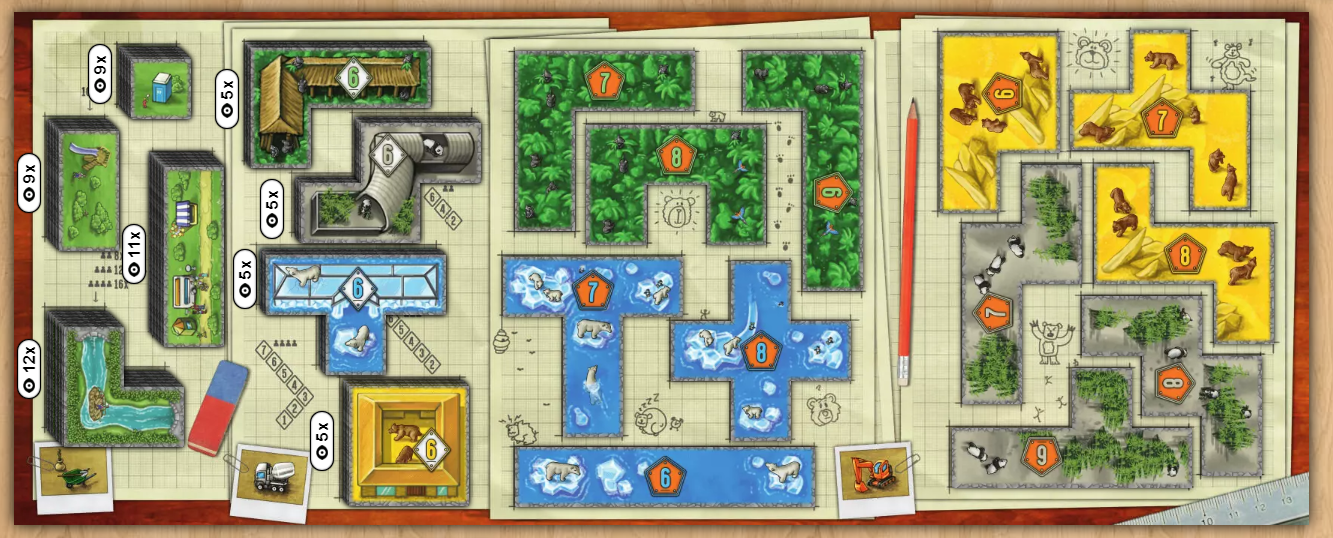
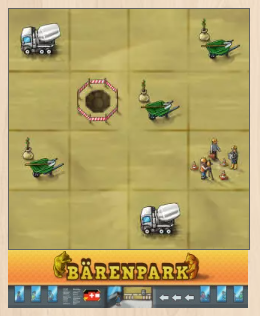
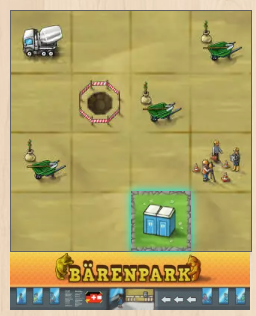
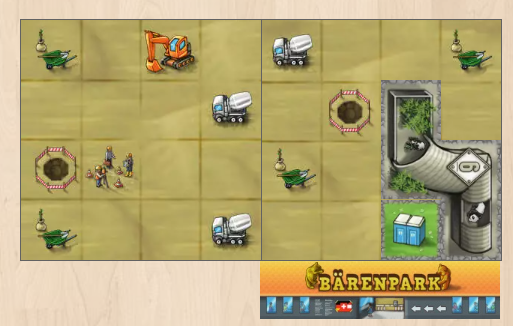
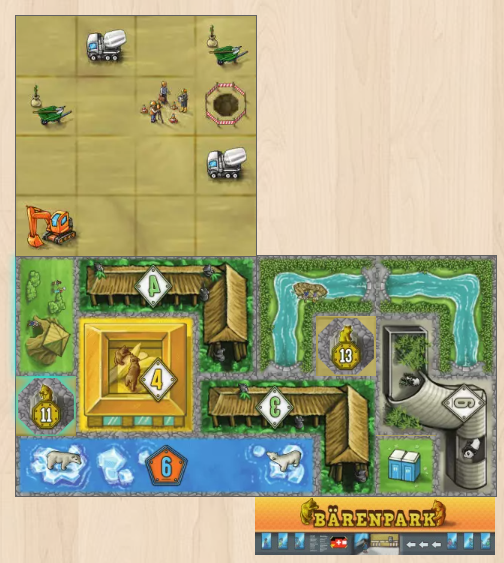
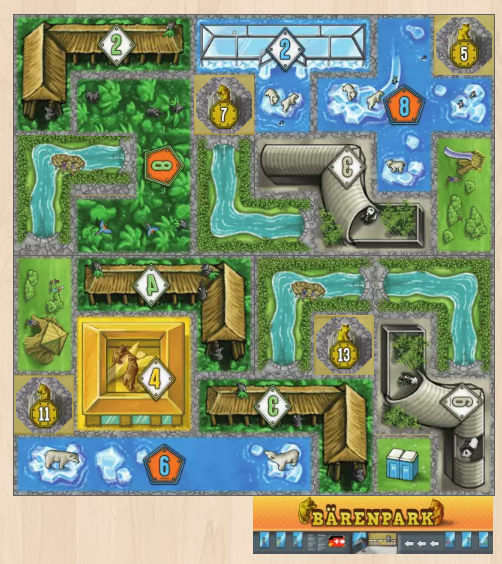
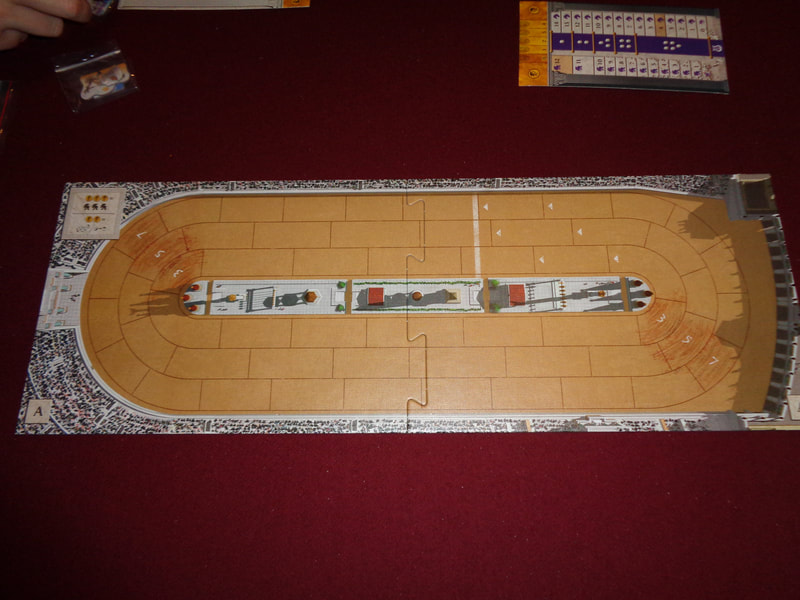
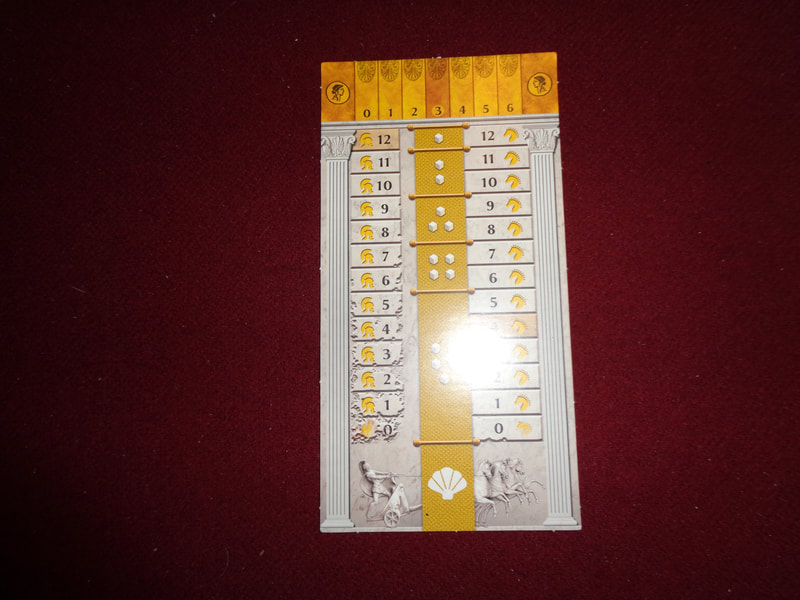
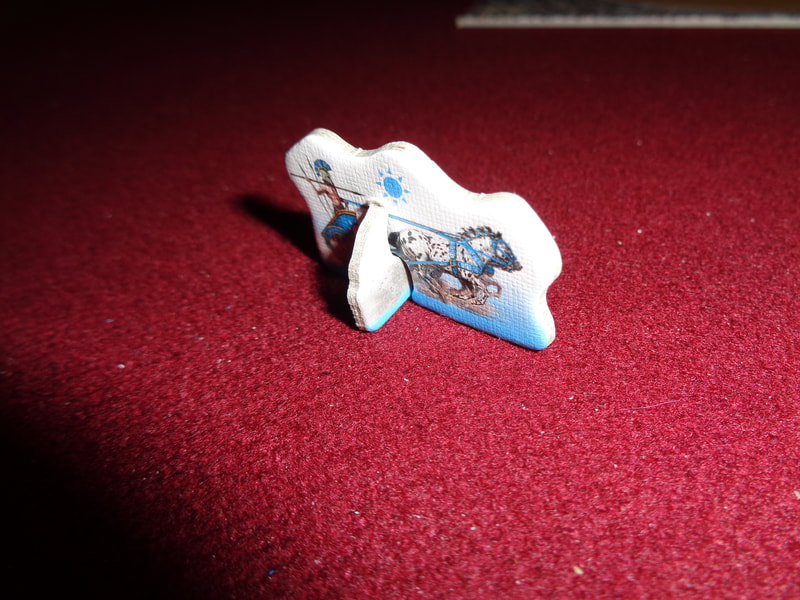
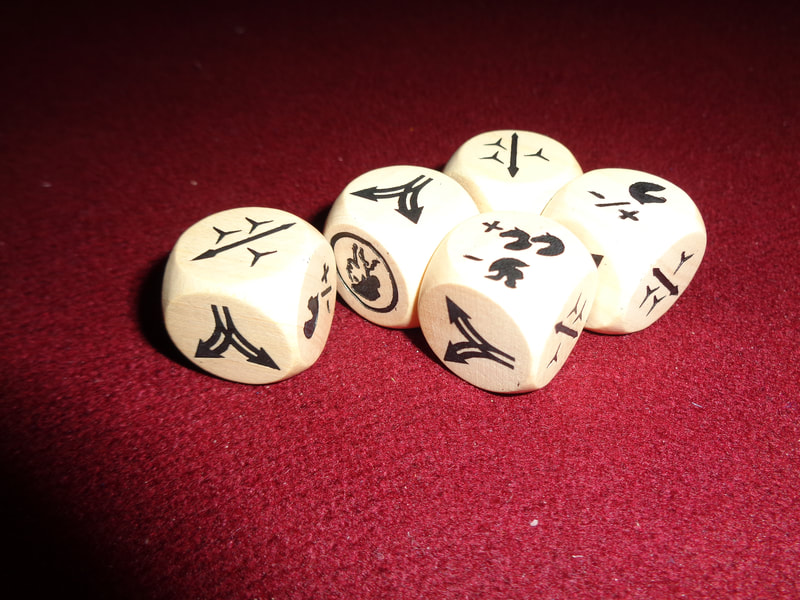
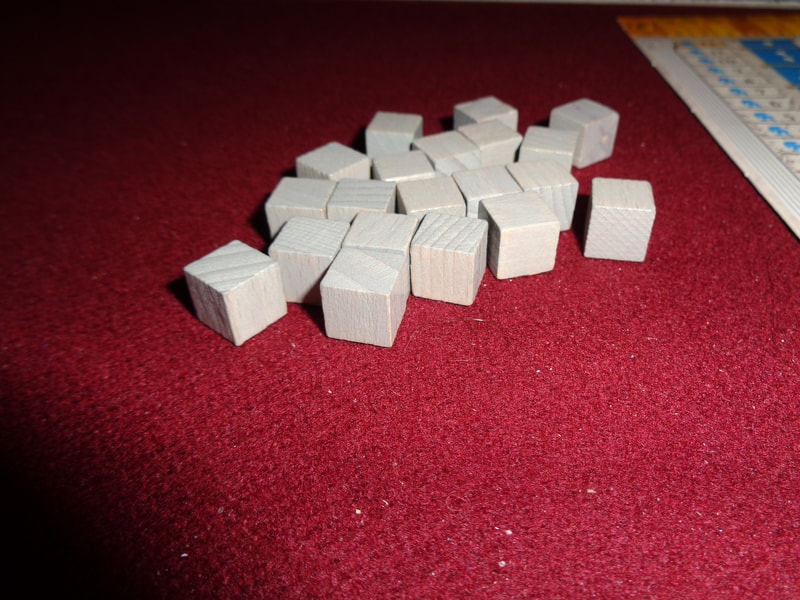
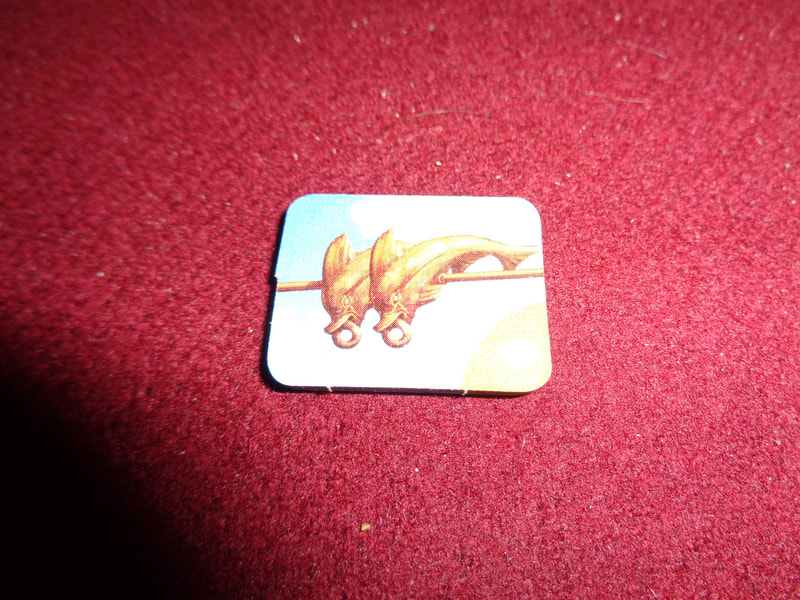
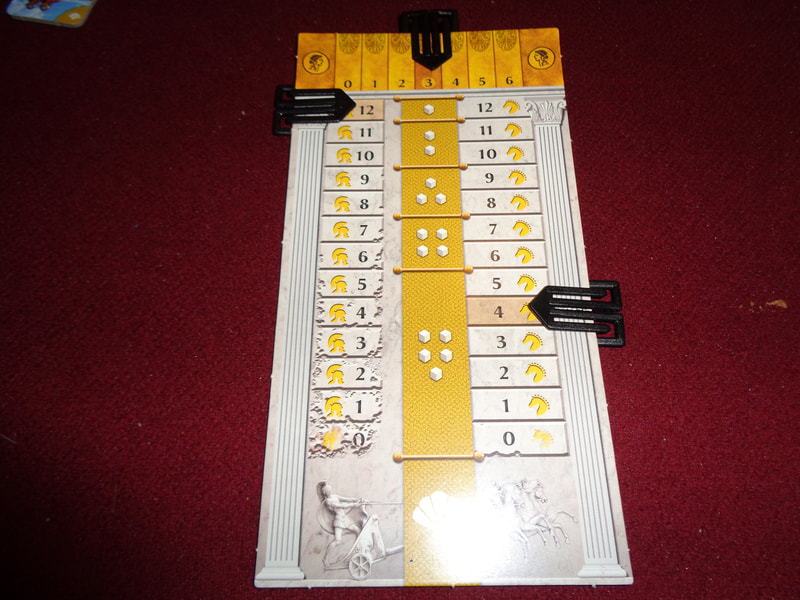
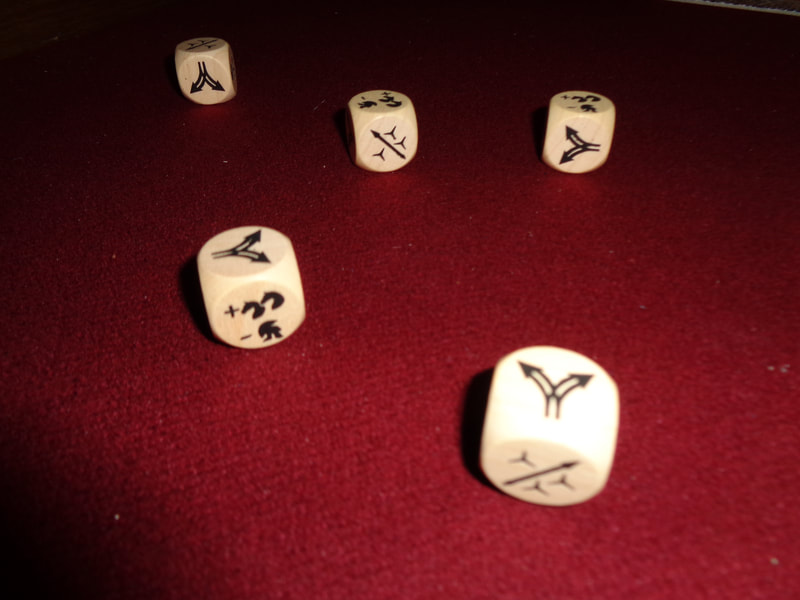
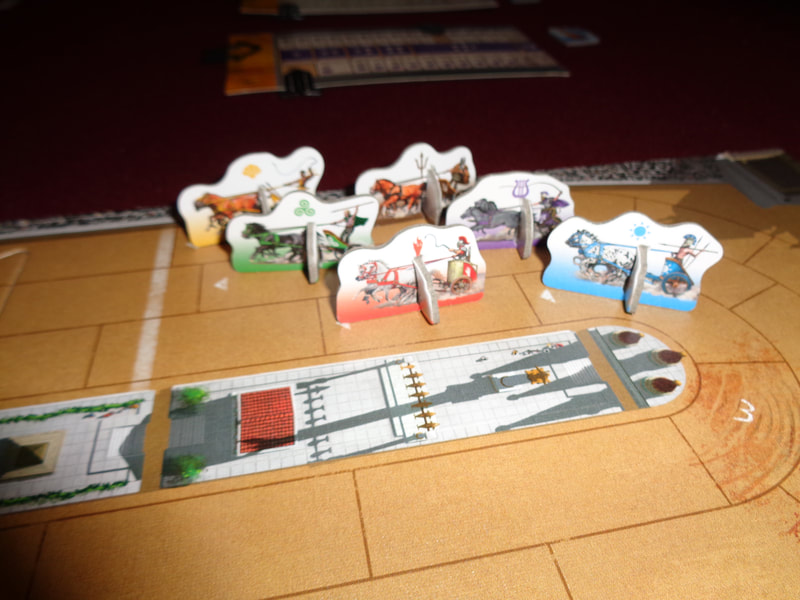
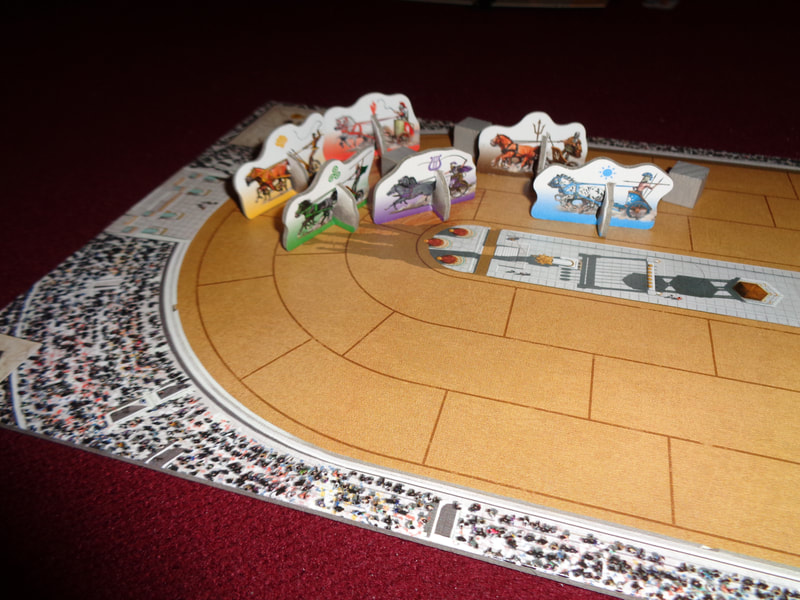
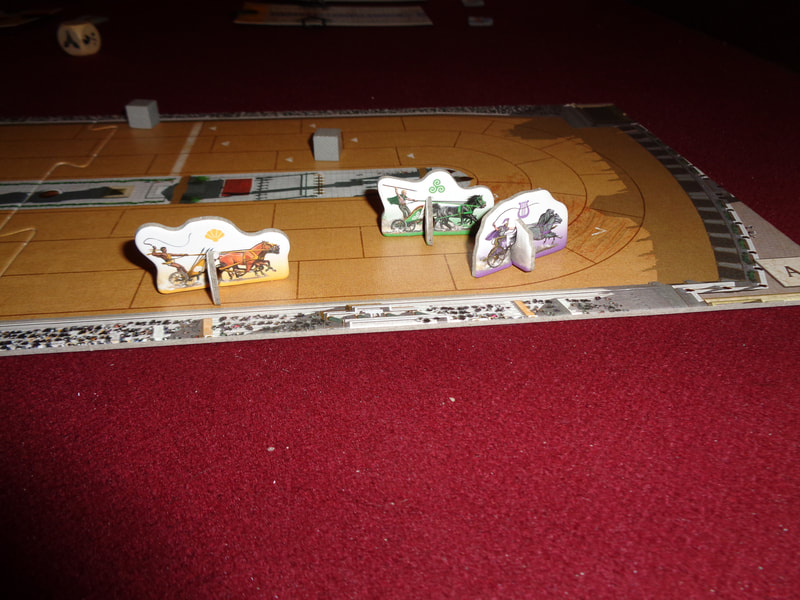
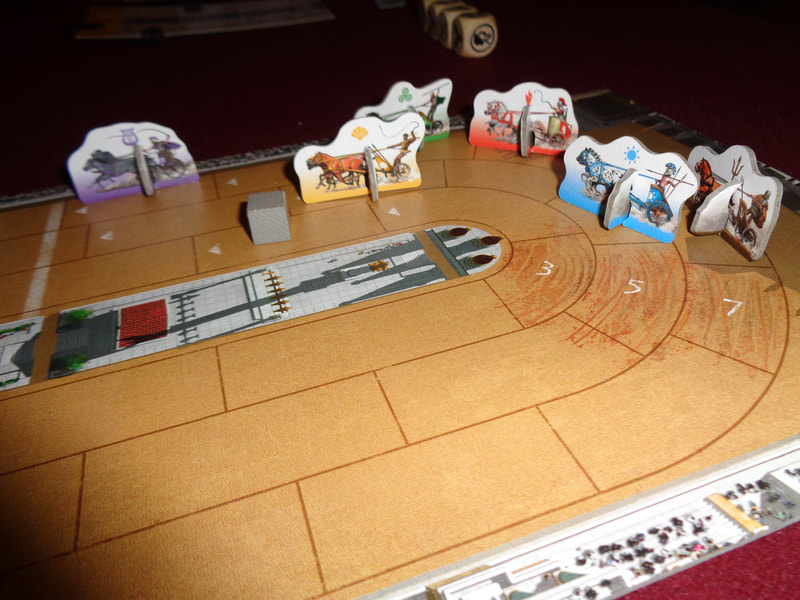
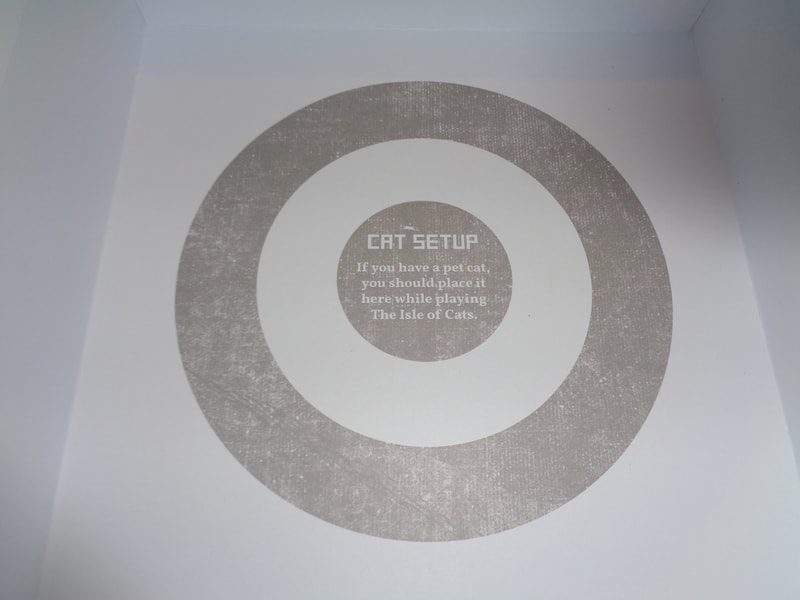
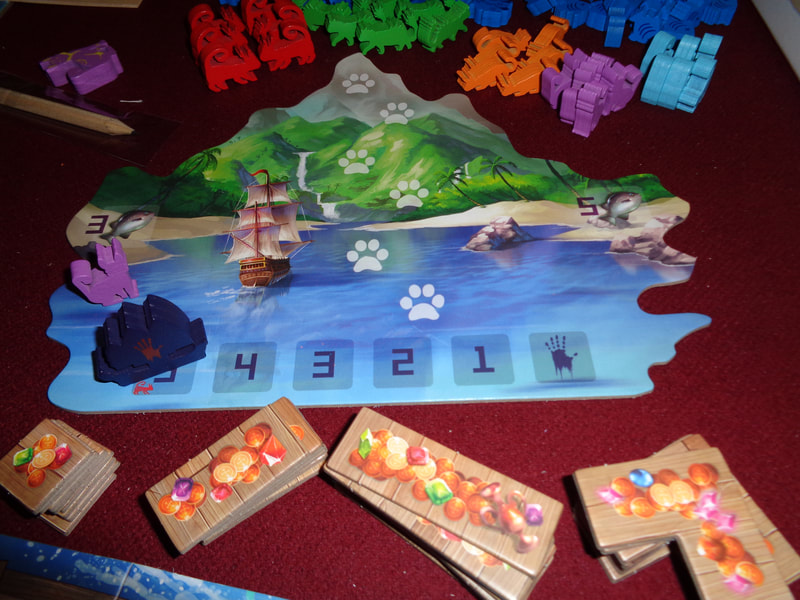
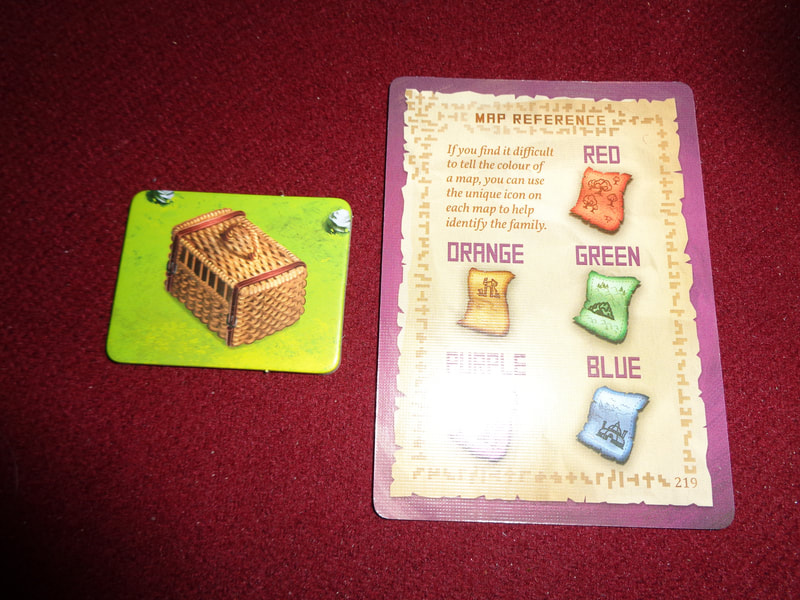

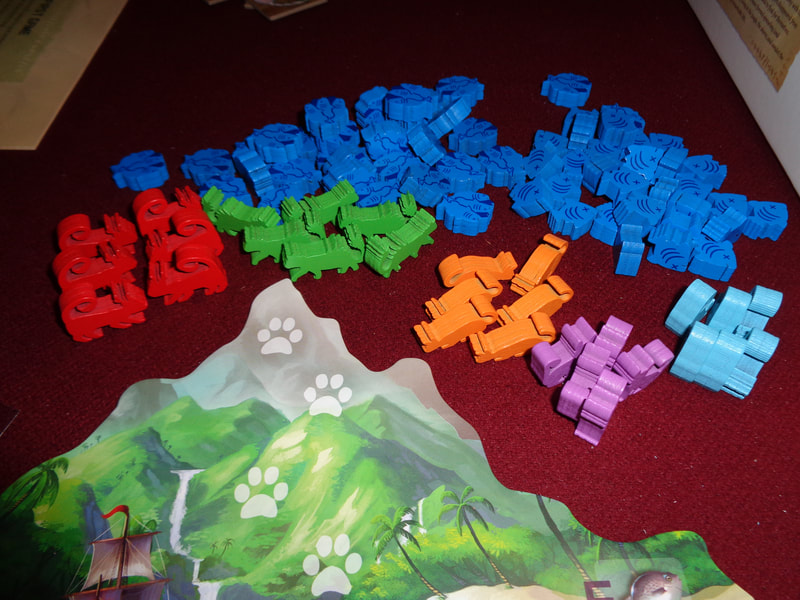
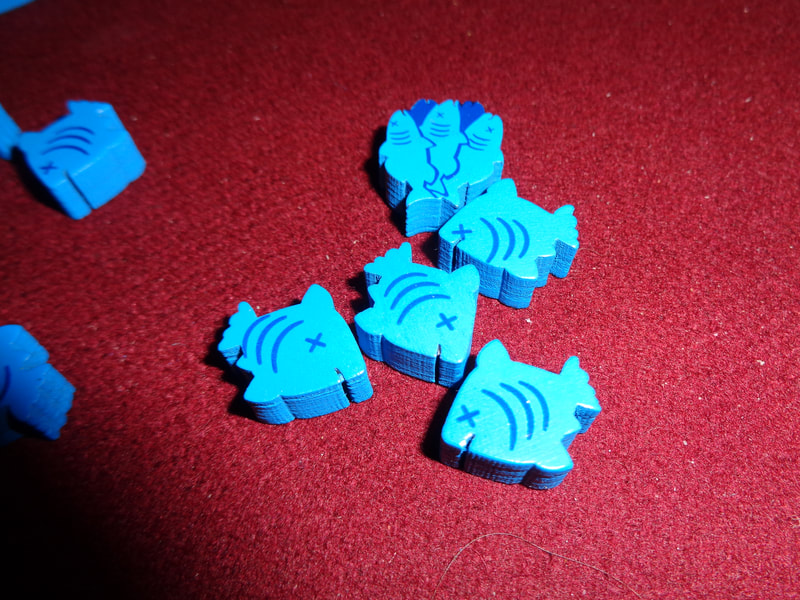

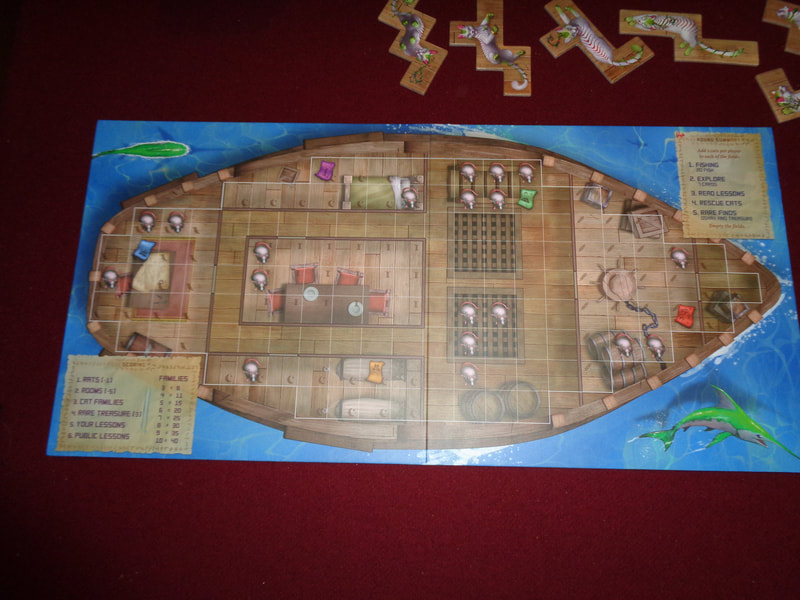
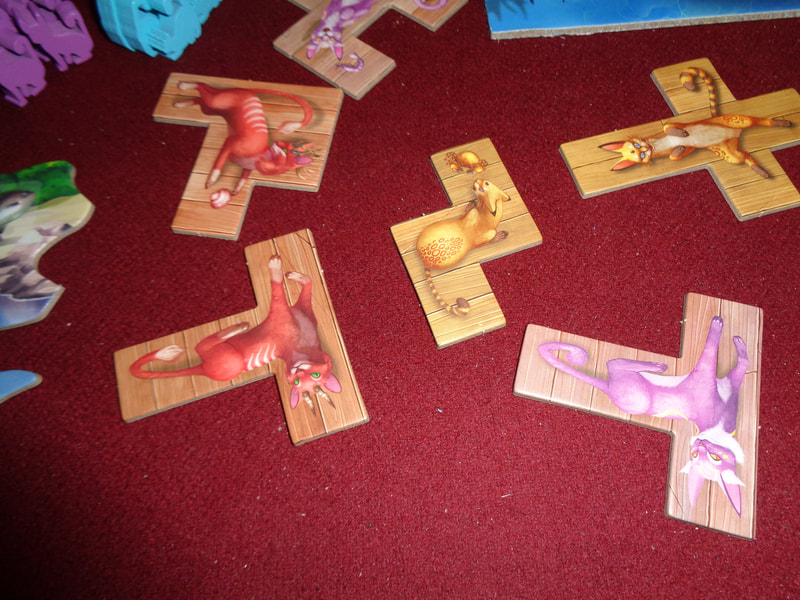

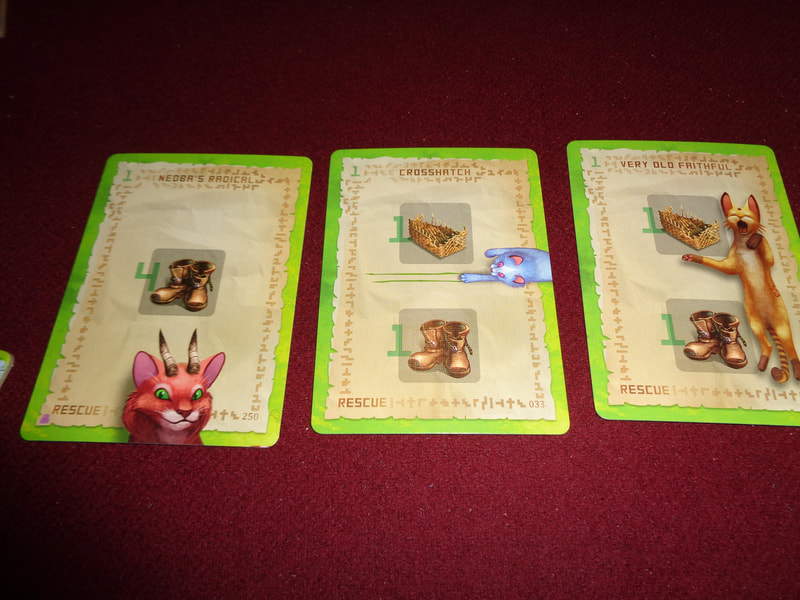
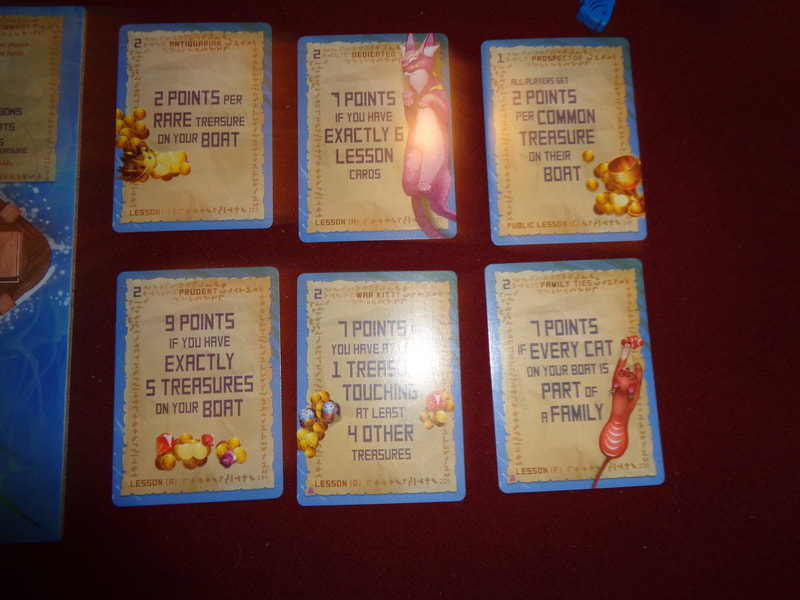

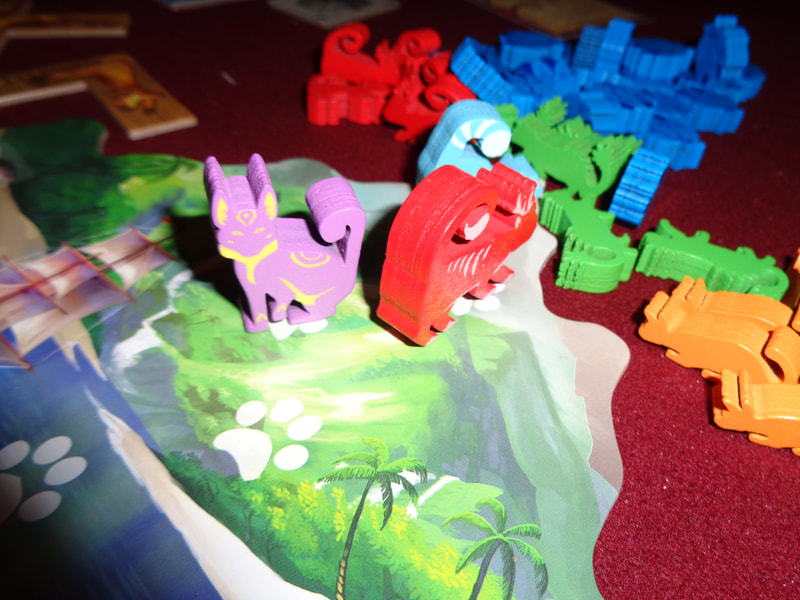
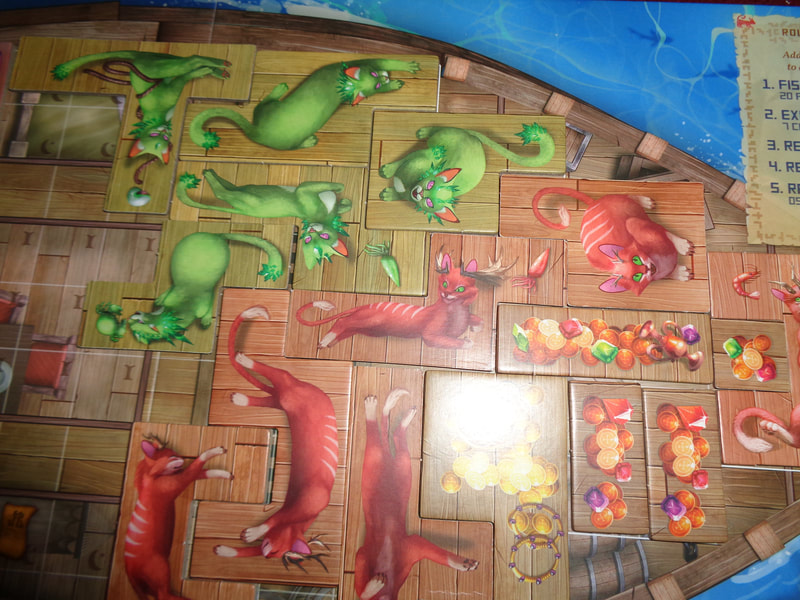
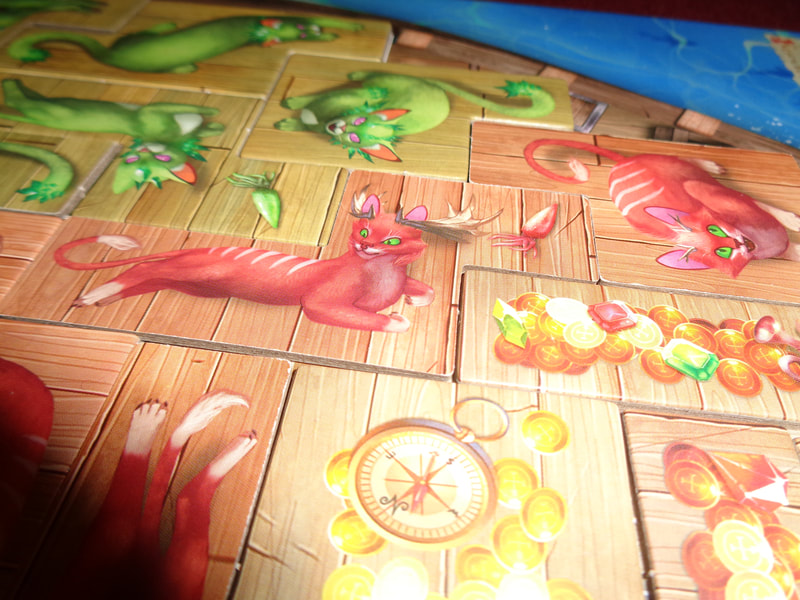
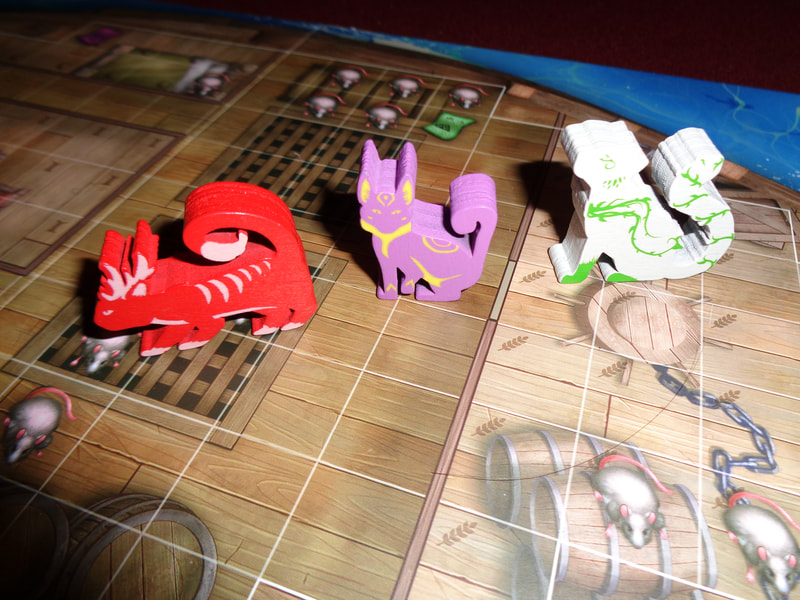
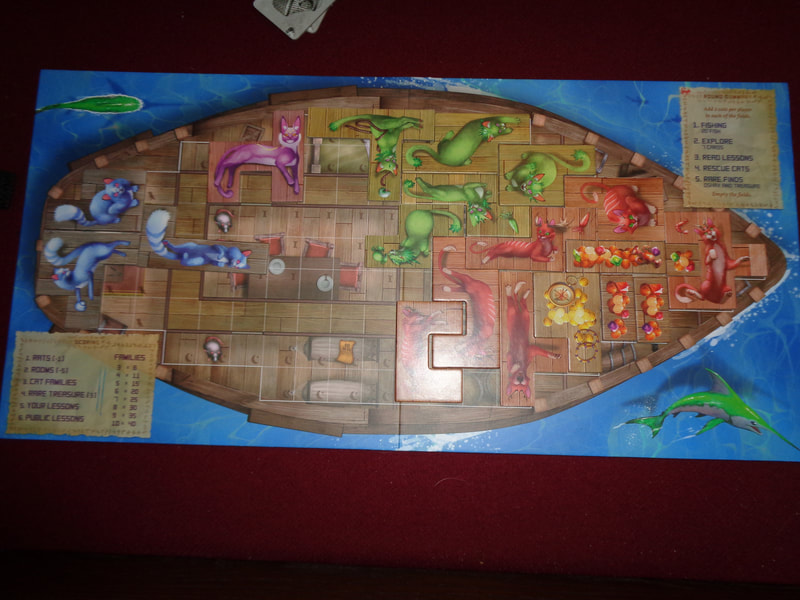
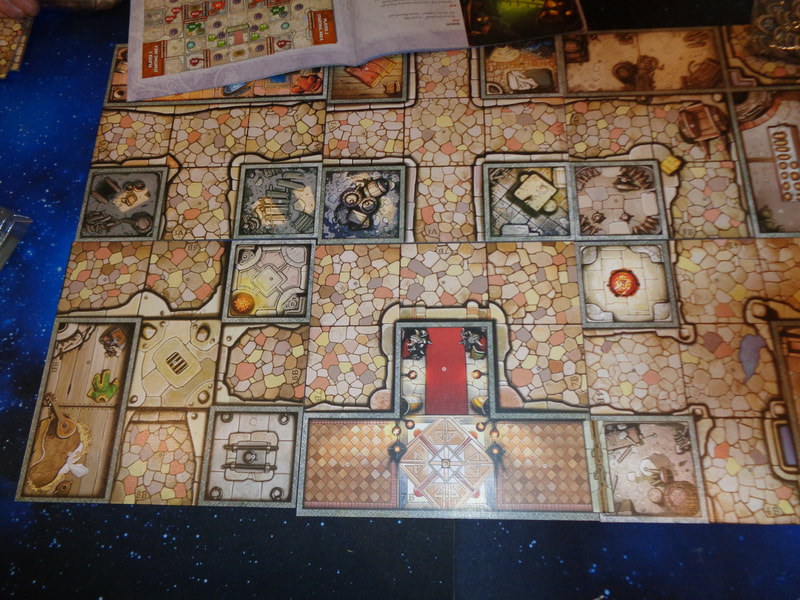
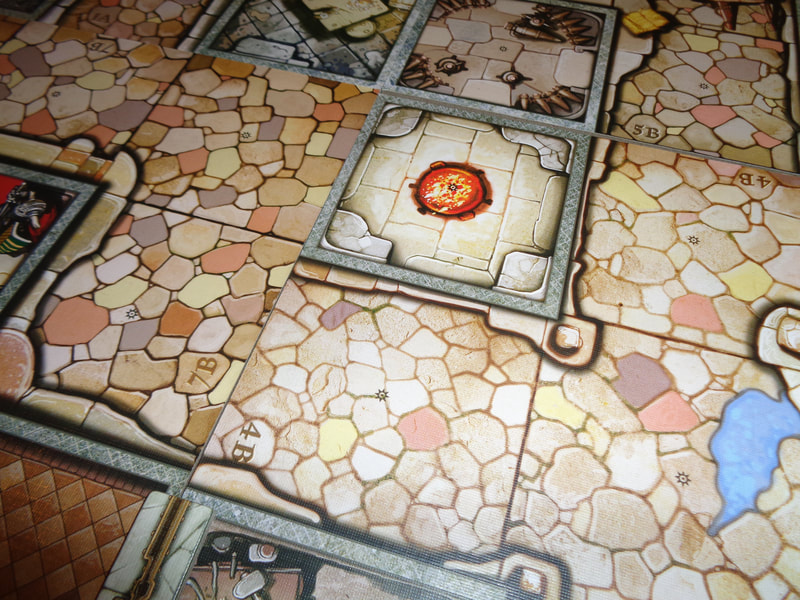
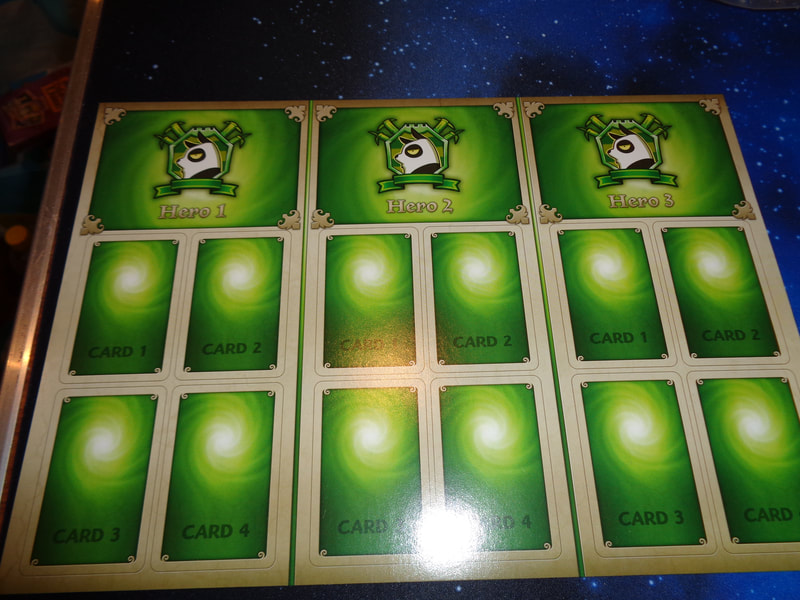
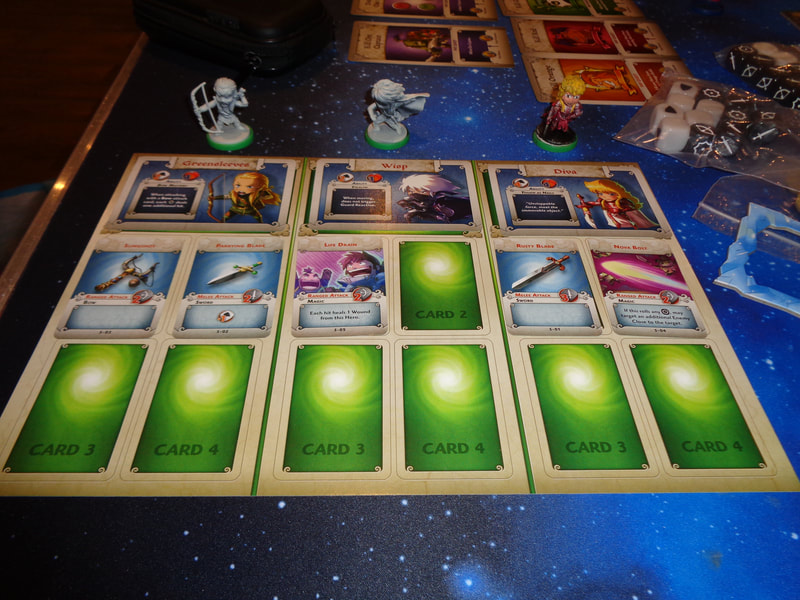
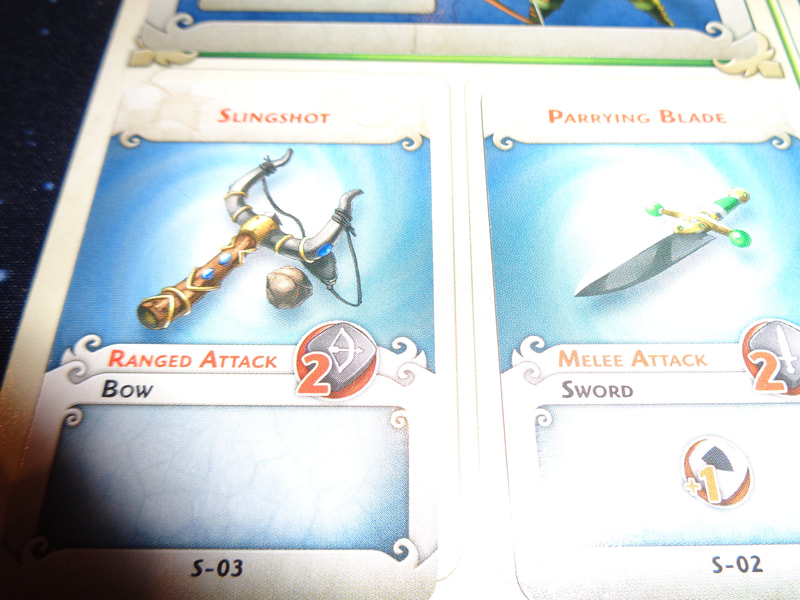
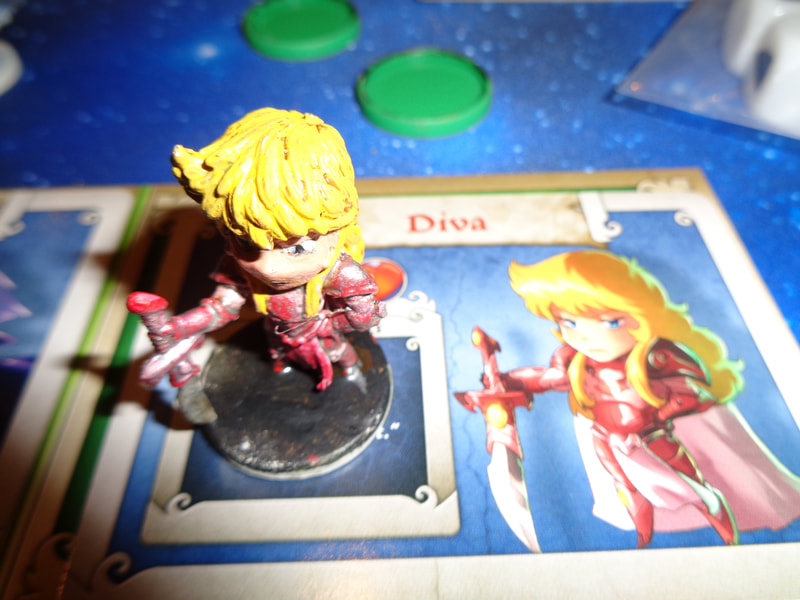
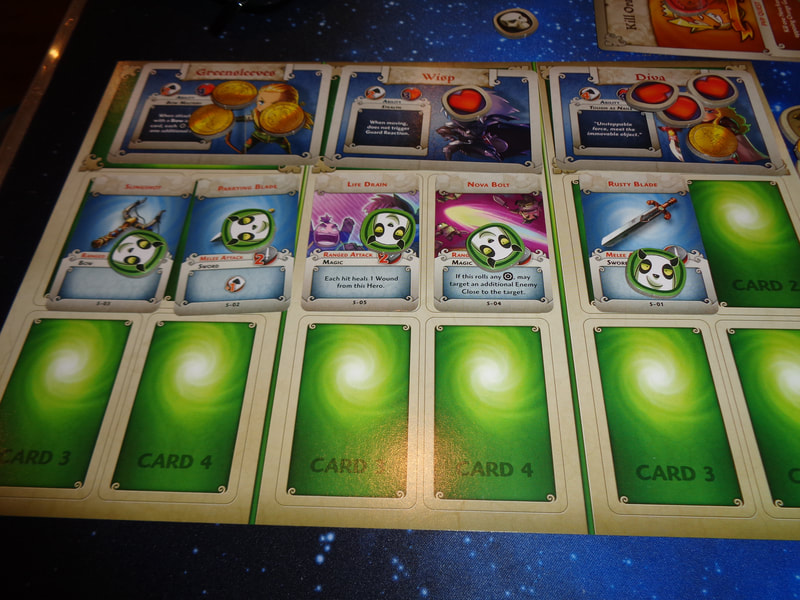
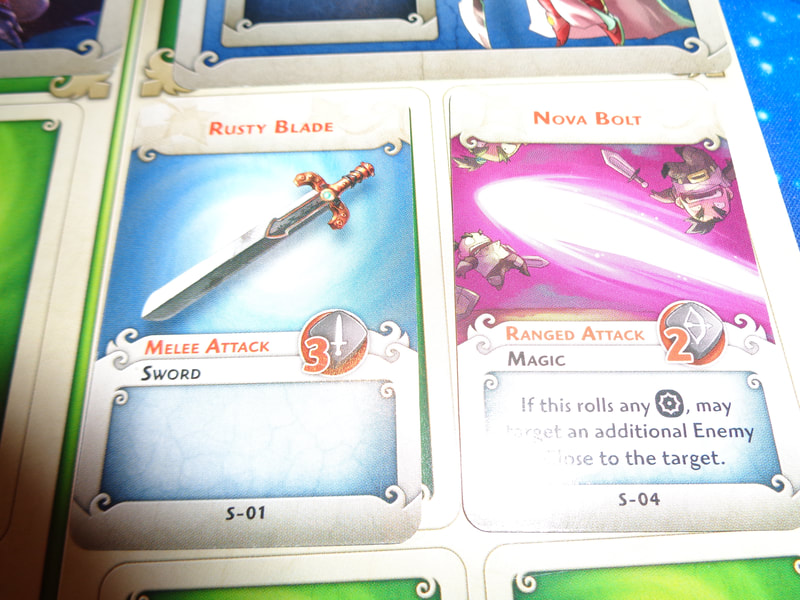
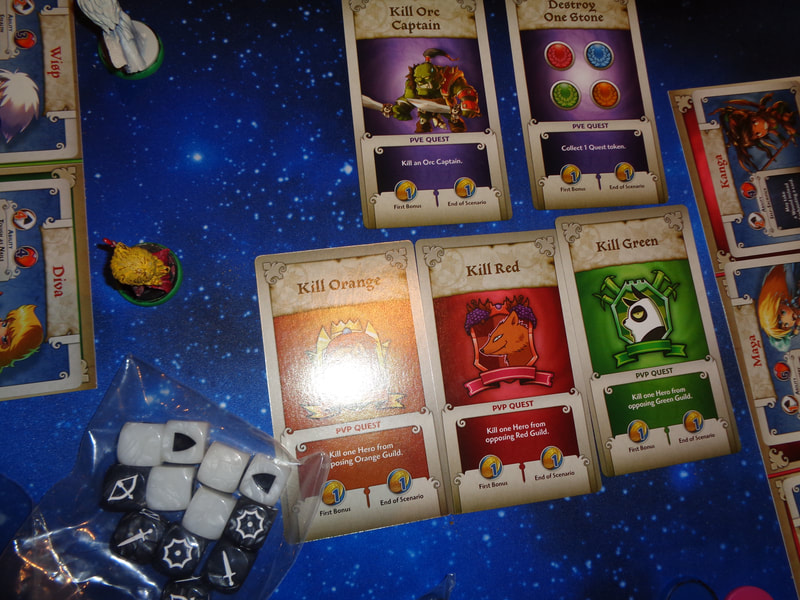
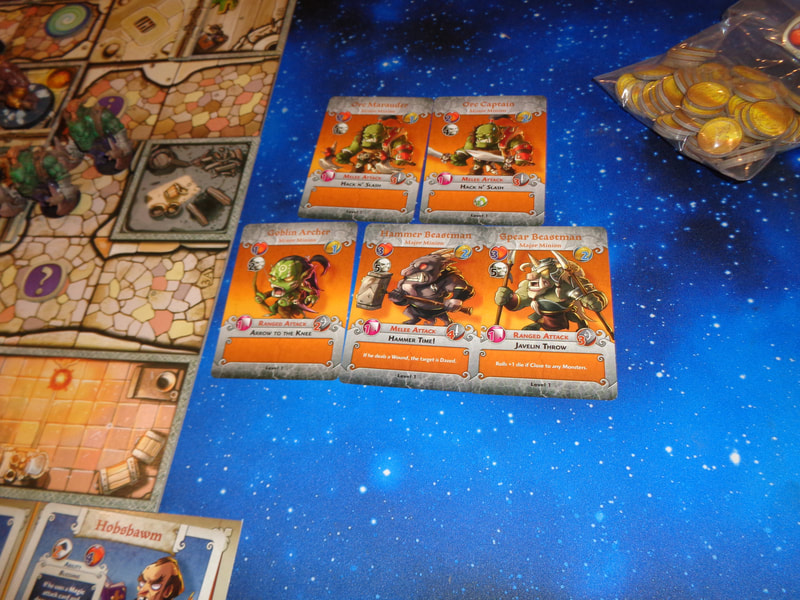
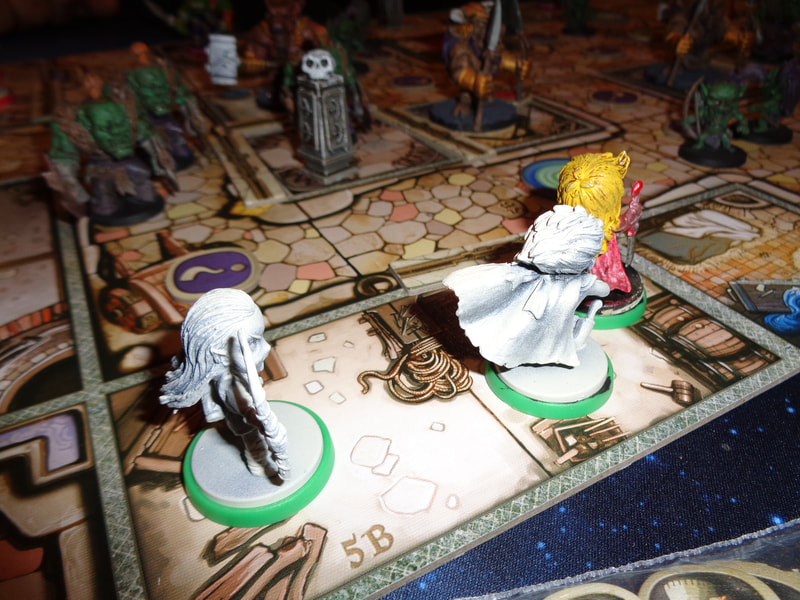
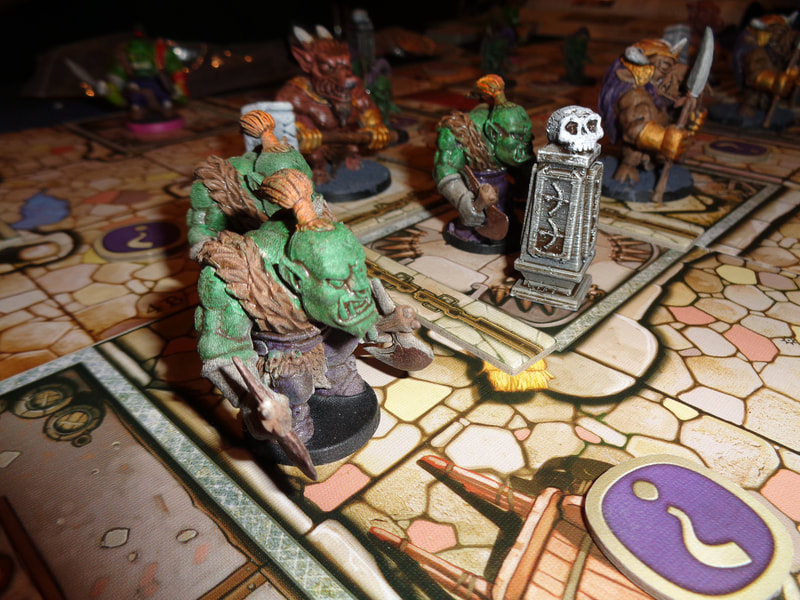
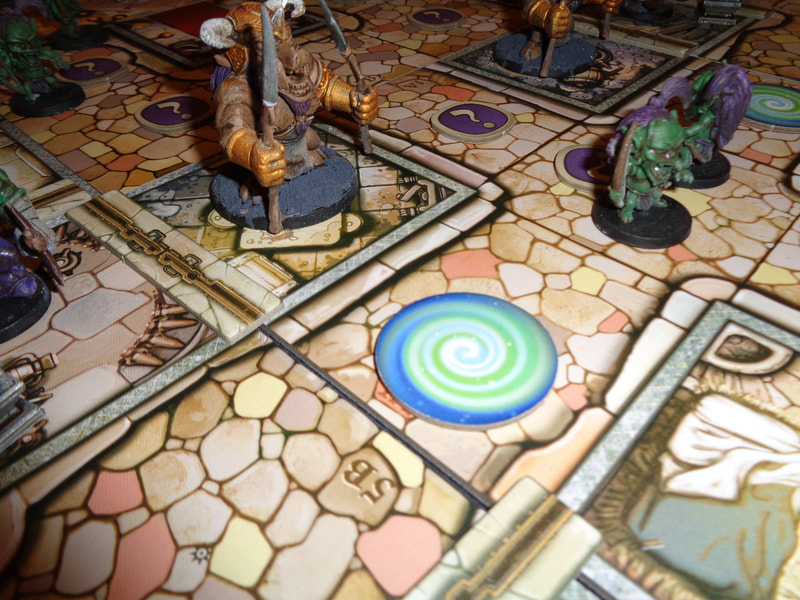
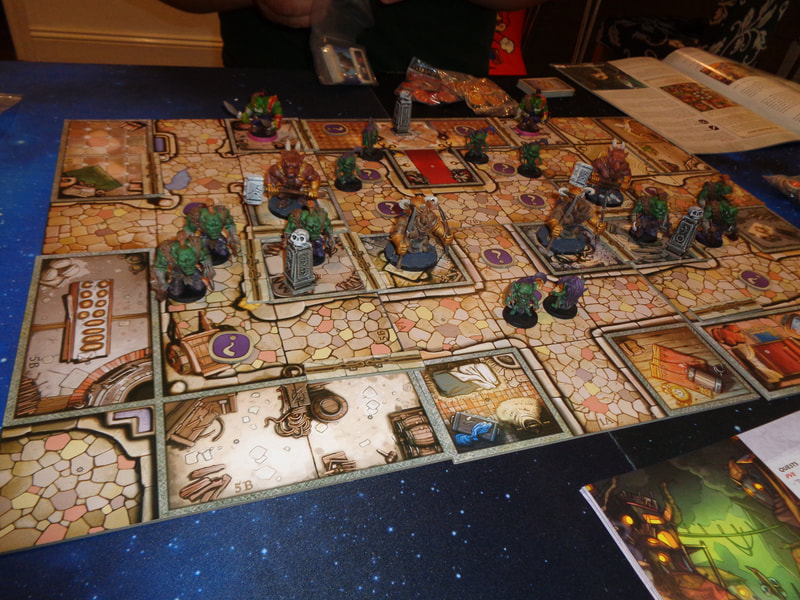
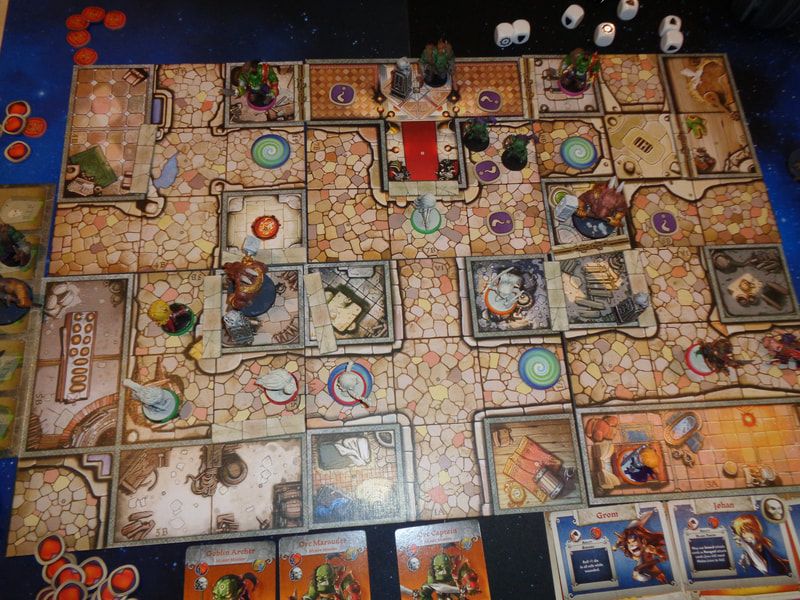
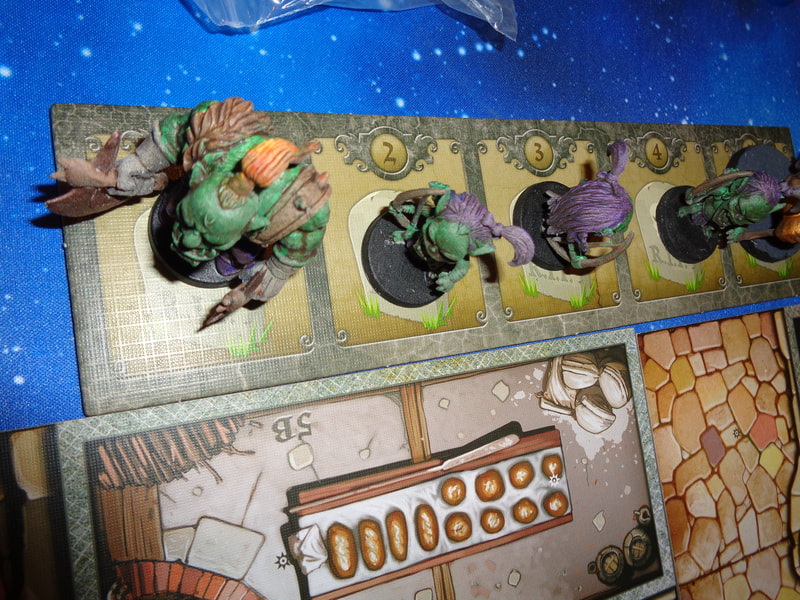
 RSS Feed
RSS Feed
